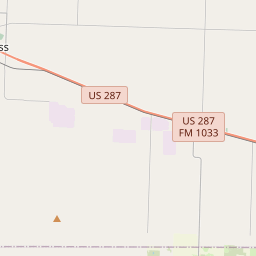Goodnight Trail
Historical marker location:






In hostile Indian years of 1866-71, route of great cattle drives from Texas to U.S. forts in Colorado and New Mexico.
Col. Charles Goodnight, trailblazer, drove thousands of cattle to water here. Site later (1886) became Childress.
Cattle watering hole is now lake in Fair Park.
(1964)
As one of the most visible programs of the Texas Historical Commission (THC), historical markers commemorate diverse topics in Texas history, including: the history and architecture of houses, commercial and public buildings, religious congregations, and military sites; events that changed the course of local and state history; and individuals who have made lasting contributions to the state, community organizations, and businesses.
The state of Texas was once an independent country known as the Republic of Texas. It gained independence from Mexico in 1836 and was a separate nation until it was annexed by the United States in 1845.
The early days of Childress County were marked by the arrival of pioneers and settlers who established ranches and farms. The region's main industry was agriculture, with cattle and cotton farming being the primary sources of income. The county became an important stop along the Great Western Cattle Trail, which connected Texas ranches with markets up north.
In the late 19th century, the arrival of the Fort Worth and Denver City Railway brought significant growth and development to Childress County. The railroad allowed for easier transportation of goods and brought an influx of new settlers to the area. The town of Childress, the county seat, was established and quickly became a hub for commerce and trade.
The 20th century brought further progress to Childress County. Oil was discovered in the area in the 1920s, leading to the establishment of oil fields and increased economic activity. The county also saw advancements in education and infrastructure, with the construction of schools, roads, and other public facilities.
Today, Childress County continues to be a primarily agricultural community, with cattle ranching, cotton farming, and oil production being the main industries. The county offers a peaceful rural lifestyle and is proud of its history and heritage.
Childress County Timeline
This timeline provides a glimpse into the major events and milestones that have shaped the history of Childress County, Texas.
- 1876: Childress County is officially established by the Texas legislature.
- 1887: The first post office is established in the county.
- 1890: The town of Childress is founded as the county seat.
- 1891: The Fort Worth and Denver Railway reaches Childress County, boosting economic growth.
- 1898: Childress County experiences a boom in cotton production.
- 1910: The town of Carey is incorporated.
- 1930s: The Great Depression hits Childress County, leading to a decline in population and economic hardships.
- 1936: A severe drought leads to further challenges for the county.
- 1940s: Oil and gas production helps revitalize the local economy.
- 1980s: Childress County experiences economic growth due to agriculture and energy industries.
- 2000s: The county continues to thrive with improved infrastructure and diverse economic sectors.